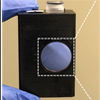
Emphasis
The emphasis is on: simulation, design and development of new x-ray sources and detector systems for imaging; new readout methods that enhance the signal quality for x-ray image generation; designs of novel imaging geometries for dedicated, general or multi-purpose imaging; algorithms that compensate for the physical properties of the detection system to improve the clinical reliability of the image (reconstruction algorithms); and approaches to radiation dose reduction, especially in CT. Of interest are diagnostic image enhancements via energy sensitive photon counting, dual/multi energy imaging and quantification, and new applications of cone-beam tomography.
Relevance
The emphasized topics are meant to lead toward: improved clinical CT and planar x-ray (e.g. mammography) systems or new camera geometries; new signal-processing and image-generation algorithms; corrections for image artifacts for enhanced reliability of clinical images; studies of x-ray physics to estimate absorbed energy of diagnostic scans; and methods of visualizing or measuring therapy doses. Investigating the associated dosimetry estimations helps to decrease the risk of diagnostic and therapy techniques.
Examples of emphasis
- improvement in compact x-ray source technologies
- development & construction of flat panel detector arrays
- evaluation of new semiconductor, scintillation and other novel radiation detectors
- reconstruction algorithms for CT and cone-beam geometry
- advances of photon counting or dual/multi-energy in CT
- techniques for improved image spatial resolution and sensitivity
- investigating x-ray luminescence tomography
- design and manufacture of x-ray gratings
- investigating interferometry and (tissue-induced) phase contrast techniques as well as development of usable phase contrast systems
- combining modalities for clinically relevant hybrid cameras (e.g. coupling x-ray CT to SPECT and PET, ultrasound, optical, MRI or other modalities)
- software algorithms and imaging protocols to estimate patient dosimetry
- improvements in digital radiography and digital fluoroscopy
- novel interaction processing such as those using scattered x-rays
- developing ion beams for novel clinical applications
- new diagnostics applied to image-guided therapy and theranostics
Additional support
- improvements in digital radiography and digital fluoroscopy
- novel interaction processing such as those using scattered x-rays
- developing ion beams for novel clinical applications
- new diagnostics applied to image-guided therapy and theranostics
Notes
- clinical application of image-guided therapy and theranostics is supported by the Image-Guided Interventions program
- development of imaging molecular agents is supported by the Molecular Imaging program
- novel evaluation of images is supported by the Image Processing, Visual Perception and Display program
Related News
NIH has just awarded $17 million for a group of projects undertaken by small and mid-sized businesses, nonprofit organizations, and academia participating in the Blueprint MedTech program.

Physical human feats require a high level of coordination between sensory and motor functions. What kind of achievements could robots perform with the same cohesion between sensing and action? In the medical space, researchers have begun to explore the possibilities.

Due to its high accuracy, lab-based PCR testing is the gold standard for infectious disease diagnostics. Yet PCR's availability is limited, especially in low-resource settings. New research suggests a new kind of test could be more streamlined without sacrificing performance.
A team of researchers led by the University of California San Diego has developed a soft, stretchy electronic device capable of simulating the feeling of pressure or vibration when worn on the skin. The new technology could pave the way for the development of advanced devices in virtual reality, medical prosthetics and wearable technology. Source: University of California San Diego.
NIBIB-funded researchers are working to make bladder surgeries better, tackling the issue from two vantage points: improving bladder function using a biodegradable construct that facilitates tissue regeneration, and enhancing patient monitoring by developing an implantable bladder sensor.

